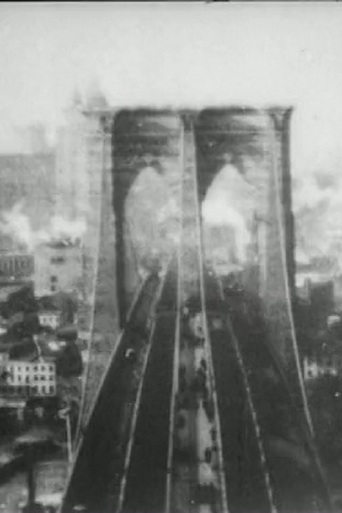

Dreadfully Boring
... View MoreAm I Missing Something?
... View MoreToo much about the plot just didn't add up, the writing was bad, some of the scenes were cringey and awkward,
... View MoreThis is ultimately a movie about the very bad things that can happen when we don't address our unease, when we just try to brush it off, whether that's to fit in or to preserve our self-image.
... View MoreIt is quite false to believe that there is no camera movement in early films or that decisions to use or not use certain effects were a result or technical backwardness. It is true that close-ups remain relatively rare and that panning in or away from the subject was almost unknown before the 1910s. But it was not have been in the least bit difficult to achieve the former nor would it have been difficult to achieve the latter (by mounting the camera on a dolly) but film-makers were probably worried that such movements would simply be distracting and irritating for the audiences (as in many poor modern films they can be). There are of course several well-known instances of close-ups in films of the 1900s but film-makers long remained chary of their use and in many ways were wise to be so. Overuse of the close-up is again one of worst failings of many modern films. As for panning, there are earlier examples(in the very earliest films of Yevgeny Bauer, for instance) but the ground-breaking Italian epic Cabiria (1914) was principally responsible for popularising what for many years afterwards was known in the US as "a Cabiria shot" (both the pan-in and the pan-out). But panning continued to be used with great moderation and that, as with the close-up, was a matter of choice not of technical incapacity.Lateral movement of the camera was, on the other hand, not so uncommon. Travelling shots had been in use in the US (principally for "ghost rides" but occasionally for panoramas) since the summer of 1896 and panoramas had had been regular fare everywhere since the autumn and winter of 1896, when they became virtually a trademark of Lumière cinematographers wherever they went. By this time already become something of a cliché. Circular(360 degree)panoramas were also easy enough to achieve but they only came into fashion at the time of the Paris Exposition of 1900 where not only the Lumières but nearly all film-companies made extensive use of them. If this film really were shot in April 1899 it would be an early example but why then should the film not be copyrighted until September 1903. It is far more likely that the date is an error and that it was in fact shot in April 1903, when circular panoramas had become commonplace. Expositions in the US in 1901-2(Pan-American, Charleston) had already provided plenty of excuses for them.
... View MorePanorama from the Tower of the Brooklyn Bridge (1899)There were countless popular genres at the start of film history. There were the dancing pictures. Comedies dealing with being slapped. There were vaudeville performers doing their acts. Another popular thing was showing panorama views of various famous locations. This one here, as the title clearly gives away, was filmed on top of the Brooklyn Bridge where we're given a 360 degree view of the city. I really enjoy watching these films today because it gives you a great view of what the city looked back in the day. This is pretty impressive as the camera is quite still and manages to give you a good look at everything, although I do wish it had gone a tad bit slower. Still, those wanting to see Brooklyn in 1899, here's your chance!
... View MoreHmmm...the date for this film on IMDb is 1899 and the DVD says 1903. Considering how well-filmed this was (from the top of the Brooklyn Bridge), it's impressive for either date--and insanely impressive for 1899 considering how crude the technology was at the time. By 1903, things had improved a bit and innovations were occurring. In 1899, cameras were essentially boxes that were cranked--with no closeups or movement. Even by 1903 this was rare--and yet the cameraman (Billy Bitzer) managed to give a moving panoramic shot--though I think he moved it way too quickly--though considering it was among the first films to even strive for a 360 degree shot, it is to be commended. If you do watch it, try slowing the film down a bit--you'll get more out of it.
... View MoreBilly Bitzer's 360-degree panorama capturing Lower Manhattan, as seen from the Brooklyn Bridge vantage point, is available in a very poor quality print transfer on Vol. 5 of UNSEEN CINEMA, the Anthology Film Archives compilation for DVD.This was filmed in 65mm (that's 70mm with room for sprocket holes), meaning a widescreen movie at roughly 2:1 aspect ratio (like THE BAT WHISPERS). IMDb has the wrong ratio listed and lists the film as 1899 while Anthology calls it of 1903 vintage.This brings up an interesting point regarding "lost films". Is a film lost when the proper materials have been lost? Many interesting films, ranging from historical titles to just '60s and '70s sex movies, only exist in battered prints or partial prints after the wear and tear of so many decades, and failure to preserve negatives. The term "lost" is generally reserved for completely lost titles, where nothing has survived.In the case of this Bitzer work, what has survived and is shown on DVD is virtually worthless. I can imagine seeing a 70mm print projected (presumably at Museum of Modern Art) and seeing a crystal clear documentary view, but this poor quality junk presumably from a battered 16mm print does not do the master justice.
... View More